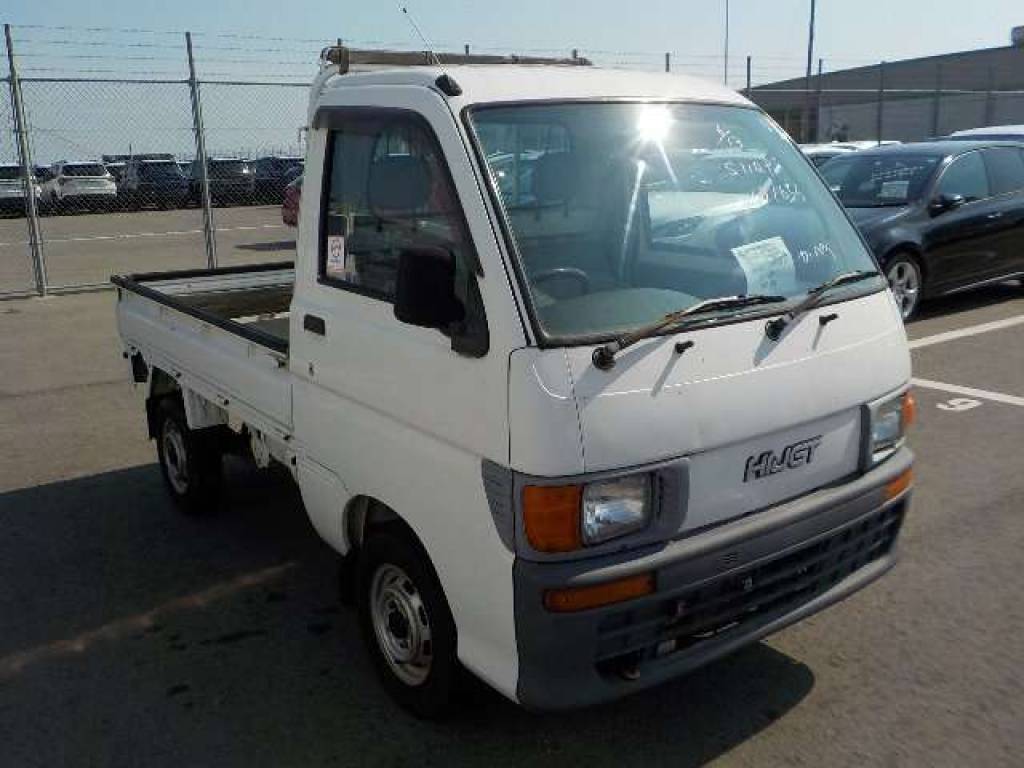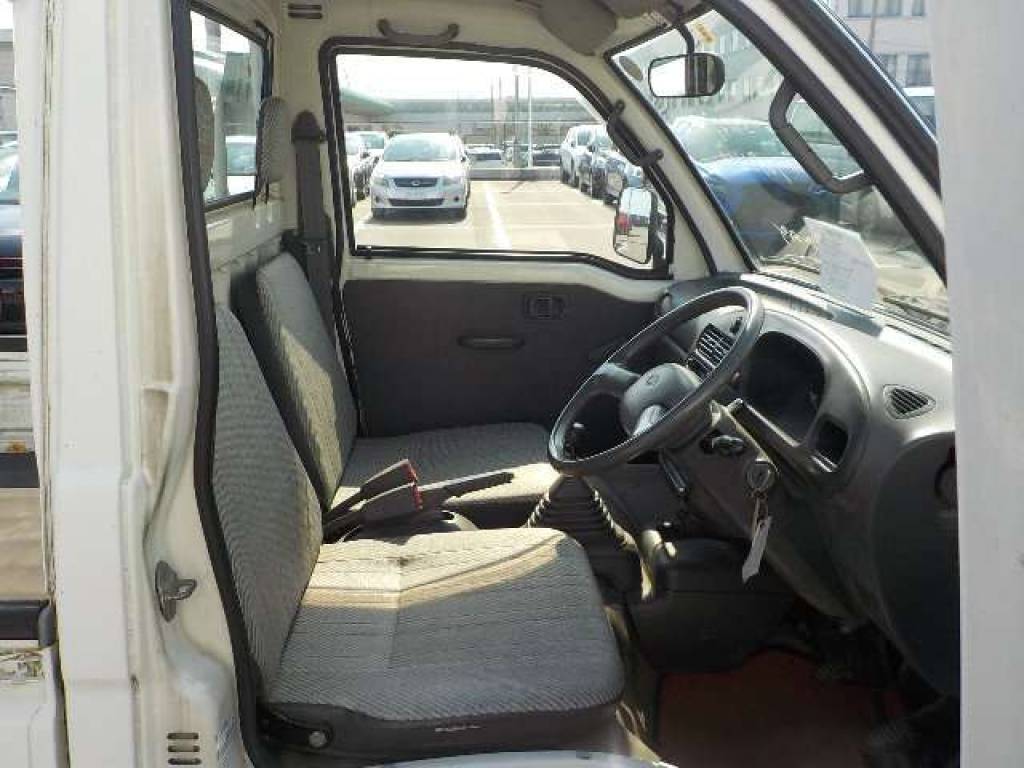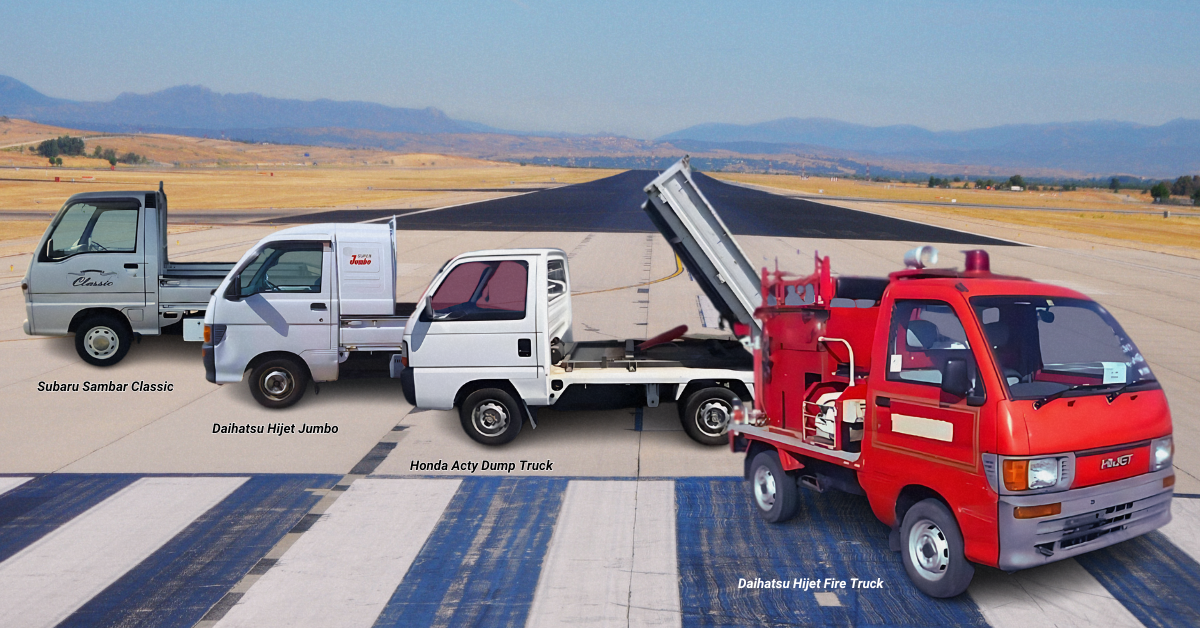Imagine yourself fitting your F-150 into a parking spot, trying to wiggle a bit of space left and right, only to sigh in relief when your large pickup truck finally fits. But just before you exit your truck, a smaller miniature truck pulls up next to you and parks into a spot with ease. What you have just encountered was a kei truck, or “light truck,” from Japan. If you have ever been to Japan, these “kei-class” cars are all over the streets due to the narrow roads and parking spaces in the cities.
Since the 2020s, kei trucks have gained tremendous popularity in the USA for their versatility and affordability, attracting both JDM enthusiasts and business owners.
These mini trucks, such as the Honda Acty Truck, Suzuki Carry Truck, Daihatsu Hijet Truck, and Subaru Sambar, all offer different advantages and perform just as efficiently as their larger counterparts. And if you are considering whether a Kei truck is the right truck for you in 2024, you’ve come to the right place.
Why Should You Consider a Kei Truck?
Kei trucks, also known as ‘keitora‘ in Japanese, are mini pickup trucks designed for the Japanese market. The very first kei truck was introduced to Japan in the late 1950s, but it wasn’t until the last few years that it became highly demanded in the USA. With the ease of importing used cars from Japan to the USA, many enthusiasts and small business owners have found themselves drawn to the attractive nature of getting a kei truck too.
What qualifies this mini truck as a “kei-class” vehicle is its maximum engine size of 660 cc and compact dimensions suitable for the Japanese market. Aside from their compactness, they also stand out among other vehicles because:
- They are cost-effective. Kei trucks are very affordable to purchase and maintain, making sure that they won’t drill a hole in your bank while driving one. They are also fuel-efficient, which means lower running costs compared to a typical pickup truck in the USA.
- They are compact yet agile. Whether you are in the middle of nowhere or the tightly knitted streets of downtown, these kei trucks can excel and maneuver themselves in all kinds of environments.
- They are versatile little monsters. Aside from personal uses such as delivery or cargo transport, Kei trucks are often used on farms and in rural areas. Off-roading and DIY modifications to a mini camper or food truck are also very popular recreational uses of these little things and hobbyists have found ways to innovate the usage of Kei trucks beyond typical transportation. Did you know that there’s an annual contest for Kei Trucks as a garden exhibit?
Most Popular Kei Truck Models:
1. Honda Acty Truck
First introduced by the Japanese automaker, Honda, in the 1970s, the Acty Truck features a boxy and utilitarian design to provide maximum cabin space without sacrificing comfort and practicality. It comes in both manual and automatic transmissions. By the 1990s, when the third generation of Acty Trucks was produced, power steering also became available to enhance the overall driving and handling experience.


Popular model series for the USA market under the 25-year rule are the HA3 and HA4 up until 1999. These model series represent two-wheel drive and four-wheel drive, respectively. The cargo bed is approximately 6.5 feet long and about 4.3 feet wide, with a height of around 1.2 to 1.5 feet. It can also carry up to 350 to 500 kg (roughly 770 to 1,100 lbs).
2. Suzuki Carry Truck


Unlike the Acty Truck, the Suzuki Carry Truck was introduced a decade earlier as one of the longest-running models of kei trucks. Generally speaking, its design and capabilities are similar to those of the Acty Truck but the cargo bed, depending on the year and model, is about 2.5 to 3 feet long, 4.5 feet wide, and 1.2 to 1.5 feet tall, like the Acty Truck. So, it is slightly more spacious in its cargo space and has garnered a strong reputation for reliability and utility, especially in commercial settings.
Both the fifth generation (1990–1999) and the early sixth generation (1999–2005), such as model series DD51T or DA62T, are popular for importing to the USA in 2024.
3. Daihatsu Hijet Truck
Daihatsu Hijet, from the automaker Daihatsu, shares its names with Toyota’s Hiace and Hilux for its truck segment. Its boxy yet compact features allow for optimal cargo space and agility in tight spaces. It is commonly found on roads for commercial transportation and farmlands, especially in the Japanese domestic market.


Previous models of the Hijet Truck are similar in dimension to its other kei truck competitors but for more space, you can also get the Hijet Jumbo, which is packed with storage space inside the cabin for more comfort and room.
4. Subaru Sambar Truck
Subaru also introduced its own kei truck, the Sambar truck, following similar dimensions and regulations as kei trucks. The dimensions of the cargo bed are the same as the Acty truck, which is renowned for its reliability and versatility.
Regulations on Importing Kei Trucks to the USA
What should you expect when trying to import a Kei truck to the US?
- Before you start buying your first kei truck, know your regulations. The US has a 25-year-old rule when it comes to importing used cars. This means, that the vehicle has to be 25 years old or older, so in 2024, any cars, including used kei trucks must have been manufactured before 1999, including the month of manufacture.
- Make sure you have the right papers. You must complete the EPA Form 3520-1 and DOT Form HS-7 to apply for your vehicle’s compliance as well as the original bill of lading, bill of sale (aka invoice), foreign registration certificate, and other documents covering the car provided by the Customs and Border Patrol inspector.
- Expect to pay for additional taxes and duties. Just because you got a kei truck at a very low price, remember that this is an imported vehicle. So, there will be customs clearance fees, port fees, duties, and any other import taxes that might be applicable. On top of that, you will need to register your vehicle especially if you plan on driving it for personal use. Always make sure you know what to expect and budget yourself for the additional costs before you make your kei truck purchase.
Kei Truck Ban Concerns and Frequently Asked Questions:
Are kei trucks banned in the US?
As popular as kei trucks have become in the US, every state has its own take on it. Some states have gone as far as banning or limiting any kei-class imports from Japan. For example, Georgia has prohibited any registrations on kei-class vehicles claiming that they don’t meet the Federal Motor Vehicle Safety Standards (FMVSS). On the other hand, Texas also tried to implement similar restrictions in 2023 but in April 2024, JDM enthusiasts were able to reverse the ban, making kei trucks street legal again.
Recently, Massachusetts has also rolled out a new policy that bans kei-vehicles but not because of safety standards. It was because of the short VINs on Japanese imported cars, which affected both kei trucks and all Japanese cars. However, as of July 2024, Massachusetts has paused canceled registrations to review the ban due to an uproar from JDM owners.
What are the emissions on Kei Trucks?
Emissions on kei trucks depend on year and model but with a maximum displacement of 660 cc, they have lower emissions compared to larger ones and are designed to meet Japan’s strict emission regulations. Of course, with older models of kei trucks especially those that are over 25 years old, there must be a lot of other environmental considerations in place, so we have explored the impacts of kei trucks in a previous article you can read here.
Conclusion
Hopefully, by now, we have answered some of your questions and concerns regarding kei trucks and whether or not you should import one for yourself. Remember to always do your research and find a reliable exporter like Carused.jp if you are not sure whether buying a keitruck is good for you. And always, always, make sure to consult with your local U.S. Customs and Border Protection (CBP) and the National Highway Traffic Safety Administration (NHTSA) for more details.
After you have checked all the details you need about importing a kei truck, it’s time to check out our selection of kei trucks for yourself. Whether you are looking for a Honda Acty, Daihatsu Hijet, Suzuki Carry, or Subaru Sambar, Carused.jp has them all.



